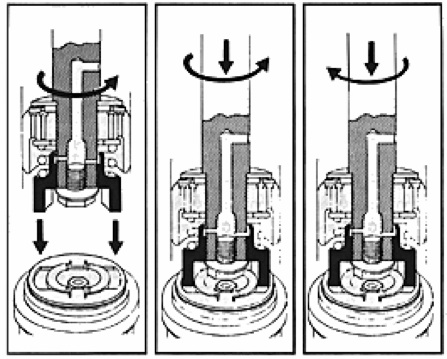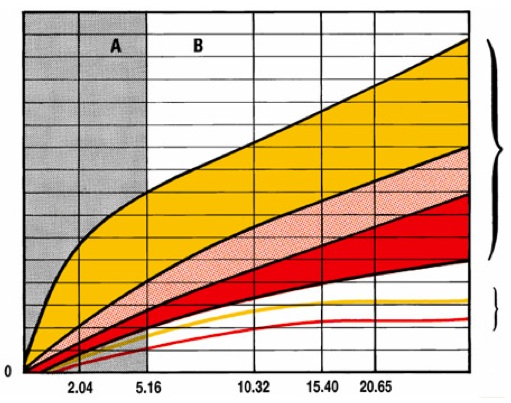Rebound Adjustment Procedure
Some shocks can be adjusted while still on the vehicle by removing the lower nut and compressing the shock fully from underneath. If you can do this, follow the instructions below, bearing in mind that clockwise turns will increase the force in the shock, and counterclockwise turns will decrease it. If there is insufficient room under the vehicle, remove the shock and hold it vertically with the dust cover on top. You may use a vice to hold the bottom attachment. If you do mount the shock in a vice, we recommend you use soft jaws to minimize damage to the shock.

Fully collapse the shock absorber while turning shocked slowly counterclockwise until you feel the adjustment nut engage in the recesses of the foot valve assembly. Once the adjustment nut has engaged, it is a good idea to make a mark with a black felt on the dust cover and shock body (to make it easier to keep track of adjustment turns).
The damper may have already been adjusted so gently turn it further to the left counting the half turns until you feel a stop.
DO NOT USE FORCE.
If you want to increase the forces, keep the shock absorber collapsed and make a minimum of 1 half-turn (180 degrees) clockwise. In case of prior adjustment add the number of half-turns previously found. The total range is about 5 half-turns.
Pull the shock absorber out vertically without turning for at least 1 cm to disengage the adjusting mechanism. The shock may now be turned freely and reinstalled on the vehicle.
ADJUSTING DIRECTION
Clockwise = Firmer Counter Clockwise = Softer
Koni Adjustability – How it works
Koni shock absorbers have up to 100% reserve damping that can be applied by simple adjustment procedures. Through this adjustment, it is possible to compensate for the loss of damping force and lengthen the optimal service life two to three times.
This adjustment feature can also be used to compensate for added weight on a vehicle. Unique to Koni, each adjustment position represents increased damping forces over the entire force/velocity range. This feature allows proportionate damping at low and high speeds.
Below is a force-velocity graph of a Koni shock absorber.

Koni shocks are designed for optimal performance at the minimum position and should be fitted as received. Once you have tested your vehicle, you can modify the damping characteristics as necessary.
Remember that adjustments must always be carried out in pairs. Failure to adjust the shocks the same amount on one axle will lead to problems such as uneven tire wear.